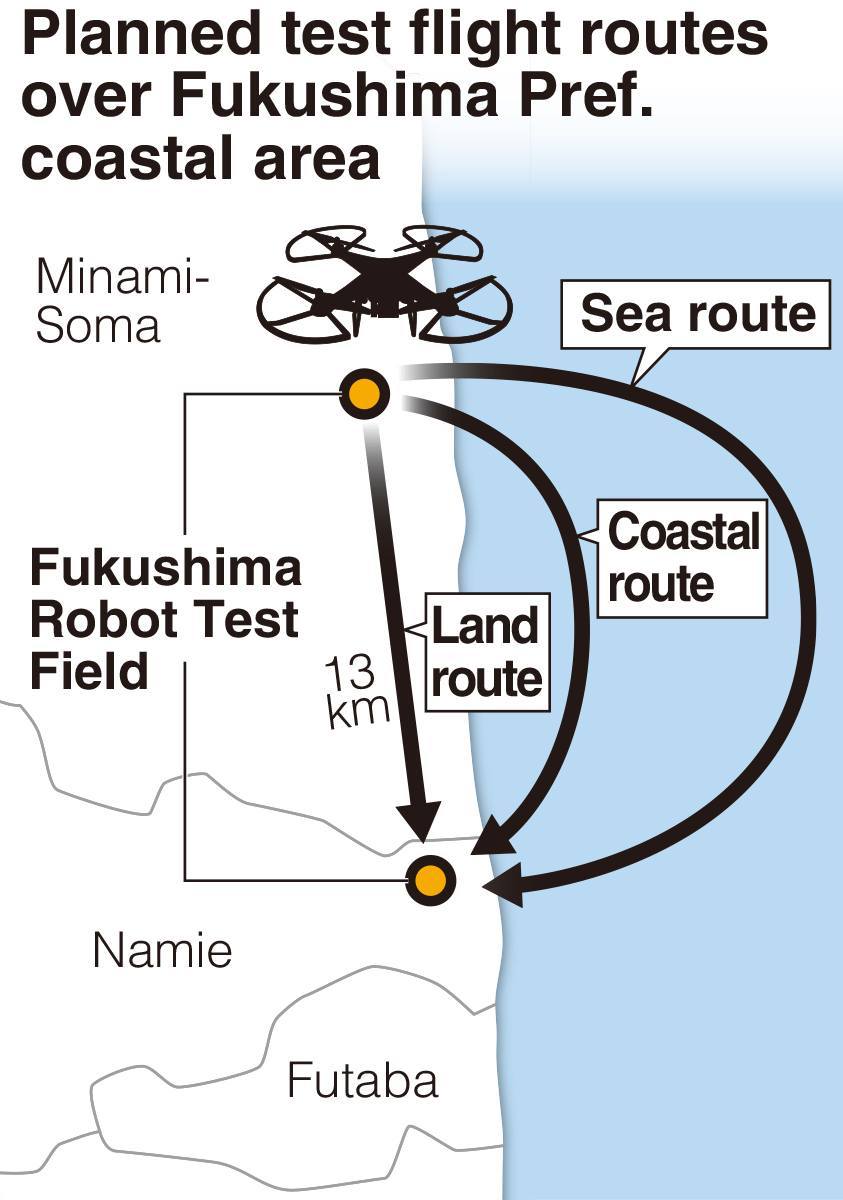
21:00 JST, March 6, 2023
The government plans to establish permanent flight routes over a coastal area of Fukushima Prefecture this summer for testing drones and “flying cars,” which are being touted as the next-generation means of transportation.
The government hopes that by attracting startup companies in the industry, the initiative will help in the ongoing reconstruction and revitalization of the disaster-hit prefecture.
The plan calls for three routes — over sea, along the coast, and over land — connecting bases at the Fukushima Robot Test Field, located in Minami-Soma, and the Test Field Runway, 13 kilometers to the south in Namie. The facilities were jointly set up by the central and prefectural governments.
The route to be used will be determined by factors on the ground or sea to lessen the risk of injury to humans if the vehicle crashes or an other accident occurs, such as by avoiding skies over inhabited areas or above busy roads and other locations.
In principle, the routes will be set at altitudes lower than 150 meters, and a number of emergency landing sites will be established along the way. According to the Economy, Trade and Industry Ministry, because test flight routes are largely set up only during approved testing periods, it will be rare to have permanent ones.
The government intends to decide on the specific routes after confirming the location of power transmission towers, electrical wires and other obstructions. The sea and coastal routes could come into use as early as this summer.
The practical application of flying vehicles requires a vast number of test flights, sometimes reaching into the thousands. The initiative envisages the participation of drone-related companies at first, with test flights of flying cars coming at a future date.
The central government is forging ahead with the Fukushima Innovation Coast Promotion, a national project aimed at creating a concentration of cutting-edge industries as the centerpiece for reconstruction of prefectural coastal areas devastated in the 2011 Great East Japan Earthquake.
In March 2020, one of the world’s largest hydrogen production facilities, the Fukushima Hydrogen Energy Research Field, began operation in Namie, while a globally advanced research, development and training facility, called the Fukushima Institute for Research, Education and Innovation, is scheduled to open its doors in April this year.
"Politics" POPULAR ARTICLE
-

Japan to Support Central Asian Logistics Route That Bypasses Russia, Plan to Be Part of Upcoming Summit in Tokyo
-

Japan to Tighten Screening of Foreigners’ Residential Status by Providing Information of Nonpayment of Taxes
-

Chinese, Russian Bombers Flew Unusual Path by Heading Toward Tokyo; Move Likely Meant to Intimidate Japan
-

Japan Plans National Database to Track Foreign Ownership of Real Estate, Land as It Weighs New Rules
-

Up to 199,000 Deaths Estimated From Mega-Tsunami; Most Recent Occurrence Took Place in 17th Century
JN ACCESS RANKING
-

Tokyo Economic Security Forum to Hold Inaugural Meeting Amid Tense Global Environment
-

Keidanren Chairman Yoshinobu Tsutsui Visits Kashiwazaki-Kariwa Nuclear Power Plant; Inspects New Emergency Safety System
-

Imports of Rare Earths from China Facing Delays, May Be Caused by Deterioration of Japan-China Relations
-

University of Tokyo Professor Discusses Japanese Economic Security in Interview Ahead of Forum
-

Japan Pulls out of Vietnam Nuclear Project, Complicating Hanoi’s Power Plans























